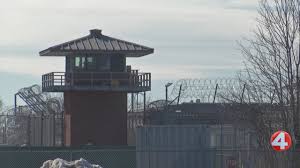New York’s correctional officers are raising the alarm over a controversial new plan from the state’s Department of Corrections and Community Supervision (DOCCS). The agency has announced it will begin releasing some inmates early in an effort to ease pressure from a deepening staffing crisis inside state prisons.
But the union representing those on the front lines says the move is reckless — and it’s demanding immediate talks with state officials to come up with a better solution before the situation spirals further out of control.
A Staffing Crisis Years in the Making
The crisis didn’t appear overnight. Prisons across the state have been short-staffed for years, but things reached a tipping point earlier this year when more than 2,000 correctional officers were fired after taking part in an unauthorized strike over working conditions.
Now, remaining officers say they’re stretched to the limit — working long hours, covering multiple posts, and putting themselves at greater risk every day.

To relieve some of that strain, DOCCS recently announced it would start releasing certain non-violent inmates up to 110 days before their scheduled release dates. Those convicted of violent crimes or sex offenses won’t be eligible.
“This Isn’t a Solution. It’s a Shortcut.”
The union representing correctional officers, NYSCOPBA, isn’t pulling any punches. In a public statement, union leaders said the state is dodging the real issue and taking a dangerous shortcut instead.
“This plan doesn’t fix the staffing crisis. It just dumps the problem onto communities and officers who are already under enormous stress,” said one veteran correctional officer, who asked to remain anonymous out of fear of retaliation.
Union officials say the state needs to look at the root causes of the staffing shortage — and fast. That includes not only the mass firings, but also how policies like the HALT Act (which limits the use of solitary confinement) have made managing inmates more difficult.
Political Fallout and Public Concerns
The backlash hasn’t come just from within the prisons. State lawmakers like Senator George Borrello have also criticized the plan, calling it “staggering mismanagement.” He’s urging Governor Hochul and DOCCS to consider rehiring some of the recently terminated officers instead of releasing inmates early.
“At the end of the day, this is about public safety. And you can’t keep communities safe if you’re gutting the correctional system,” Borrello said.
On the other side of the debate, some criminal justice reform advocates say the early releases are a step in the right direction — arguing that reducing the number of people behind bars, especially for non-violent offenses, can help move the system toward rehabilitation instead of punishment.
Inside the Prisons: A Growing Sense of Unease
Correctional officers say morale is at an all-time low. Many describe the current working environment as chaotic, stressful, and sometimes dangerous.
“We’re constantly being asked to do more with less,” said another officer at a medium-security facility in upstate New York. “You don’t know what you’re walking into every day.”
With the state now telling prisons to operate with just 70% of typical staffing levels, officers worry about safety — not only for themselves, but for the inmates, too.
“You take away staff, and you’re asking for trouble. You’re asking for fights, for breakdowns in order,” said the officer.
What’s Next? Union Demands Action — Not Just Announcements
The correctional officers’ union isn’t just demanding that the state rethink the early release plan. They’re also calling for a seat at the table — to have real conversations about how to fix what they see as a crumbling system.
Ideas include better recruitment efforts, competitive pay, mental health support for overworked officers, and a reexamination of policies that limit how officers can manage inmate behavior.
The message from the union is clear: Band-Aid solutions won’t work anymore. What’s needed is a comprehensive plan — one that brings correctional officers, policymakers, and prison officials together before things get worse.


